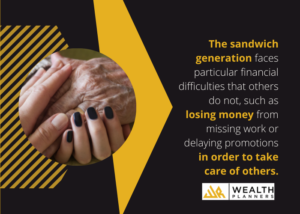What just happened? Think for a second about your mindset in January, 2020. Looking back, it’s shocking to think the only unpleasantness we could have safely forecasted was the upcoming election. Can you remember if anything else that happened publicly during 2020 was on your mind this time last year? This is not meant to be a rhetorical question; I’m drawing a genuine blank.
I don’t ask this question in jest. Frankly, in the wake of the pain, suffering, turmoil, and loss of last year, my only hope is that we are in for a happier, healthier, and more prosperous 2021. However, now that the 2020 markets have closed, I’d like to take this time to revisit the topic of volatility. In particular, the intra-year fluctuations that trigged headlines like:
“THIS WAS THE FASTEST 30% SELL-OFF EVER, EXCEEDING THE PACE OF DECLINES DURING THE GREAT DEPRESSION”
…But also
“DOW AND S&P 500 END 2020 AT RECORD HIGHS”
Yes, we’ve discussed the topic of volatility before, but 2020 gave us a case study that was too “idyllic” to ignore. I put idyllic in quotes, because this adjective should not be confused with any sort of charming or worse, amorous circumstance. Quite the opposite in fact. I use ‘idyllic’ in same context as IIHS crash test results that reinforce the importance of wearing your seatbelt.
Last year, the S&P 500 opened at 3,244.67 and closed at 3,756.07. That’s a 15.75% gain and this healthy return wasn’t unique to the S&P. In fact, the Dow started 2020 at 28,638.97 and closed at 30,606.48. I’d agree that this modest 6.87% record-setting return has its appeal. What about the Russell 2000? Up 17.97%. Oh, and the NASDAQ? This index rang in the New Year up a whopping 44.51%!
My point is not to imply that when the ball drops at midnight on December 31st in any given year, all will be well in the market. Rather, the events between New Year’s Day and its successive New Year’s Eve will be uncertain and during that time, the market is going to use all available information to respond accordingly. Consequently, in 2020, the S&P 500 had 2 of its 20-best trading days since The Great Depression and 3 of its worst. Interestingly, we’ve seen this pattern before in 2008, but with a decidedly less uplifting moral to the story. The S&P 500 closed 2008 down 38.47% and did not reach its January 2nd, 2008 opening value again until 2013.
What I hope to illustrate by all of this is what I’ve hoped to illustrate in every Insight where I’ve written about the intersection of the market and your decision-making:
BUY OR SELL BASED ON YOUR CIRCUMSTANCES AND PLAN, NOT THE MARKET.
If your plan indicates that you need cash or your asset allocation is out of balance, then sell. If your income or available cash is sufficient to wait out unpalatable events in the market, then we do so in order to avoid turning temporary declines into permanent losses. So, if you meet the criteria above, but still have an inclination to sell when the market gets turbulent, we recommend one of two options:
Either, find a proverbial-bucket of sand and swiftly insert your head, or (more preferably), call, email, or schedule a meeting. Our mission to serve as your financial confidants and stewards for your wealth is never more critical than when we have a year like 2020.






